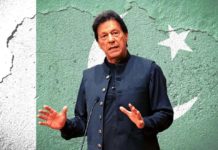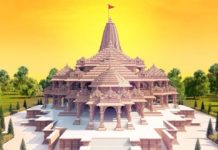Disclaimer: The Eqbal Ahmad Centre for Public Education (EACPE) encourages critical and independent thinking and believes in a free expression of one’s opinion. However, the views expressed in contributed articles are solely those of their respective authors and do not necessarily reflect the position or policy of the EACPE.
Chief Minister of Uttar Pradesh, Yogi Adityanath has decided to re-name the upcoming “Mughal Museum” in Agra after Chhatrapati Shivaji Maharaj, saying that the Maratha ruler’s name “will invoke a feeling of nationalism and self-esteem.” “How Mughals can be our heroes,” he asks.
History has never been a strong subject with Chief Minister Adityanath and other zealous, parochial Hindu nationalists.
Here is how. Previously known as Akbarabad, Agra was the capital of the Mughal Empire under the Mughal Emperors Akbar, Jehangir and Shahjehan. Agra is one of the three most popular cities located on the famous ‘Golden Triangle,’ including Delhi and Varanasi. It is known worldwide for its UNESCO World Heritage Sites –the Taj Mahal, Agra Fort and Fatehpur Sikri, all built by the Mughals. Taj Mahal has come to be a symbol of India and a dream destination for many international tourists. Tourists, researchers, filmmakers, historians and archeologists throng the city, contributing significantly to Uttar Pradesh’s economy. All international dignitaries visiting India are proudly taken to show off this magnificent marvel of Mughal heritage. The rich legacy of beautiful monuments built by the Mughals generate crores of rupees annually for the government. Taj Mahal alone generates Rs. 21 crore, the Qutub Minar Rs. 10 crore, and the Red Fort and Humayun’s Tomb Rs. 6 crore each. The upcoming Museum in Agra has been conceptualized to house Mughal artifacts, weapons and dresses. The Maratha ruler Shivaji does not have the remotest connection with the city, his only claim over Agra being a visit in 1666 when summoned by Aurangzeb.
History has never been a strong subject with Chief Minister Adityanath and other zealous, parochial Hindu nationalists. Most would agree that the presence of a nation is built on and evolves from its past. However, Hindutva protagonists insist on traveling back into time to re-creating a past by denying, vilifying and blotting out factual chapters from history to serve their communal, narrow-minded agendas. In the process, they have gone into collective amnesia about the one hundred and eighty-one years of Mughal rule and are trying to conjure up myths of Hindu glory to fill in the gaps.
In this unrelenting drive to wipe away traces of Mughal presence in India, Muslim names of at least ten cities and certain roads, railway stations and buildings have been replaced by Hindu names. Beginning with the re-naming of Aurangzeb Road in Delhi in 2015, other re-namings include Akbar Fort in Ajmer and Mughal Sarai Railway Station in Uttar Pradesh. History textbooks are being targeted to tear out chapters on Mughal history.
In this bigoted, frenzied war against the erstwhile Muslim rulers and the bona fide Muslim citizens of present India, a large number of whom are converts from Hinduism, the pseudo- Hindu-nationalists obfuscate many historical truths. The Mughals, even though they invaded the Indian subcontinent, adopted it as their home, subsuming their identity and becoming inseparable from the country and its culture.Babur allowed building of new Hindu temples and cow slaughter during his reign. Akbar was a secular ruler whose government included Hindus in many high posts. He has been acknowledged as one of the outstanding rulers in world history. The majority of Mughal emperors followed the policy of Sulah Kul, meaning the peaceful coexistence of diverse communities and religions. Even though instances of cruelty and suppression cannot be totally disregarded, had the Mughal rulers been bent upon wiping out Hinduism, surely Muslims would count for much more than the meager 14% today.
Is it possible to erase the contributions of an empire that extended from Kashmir to Tamil Nadu and Kandahar to Bengal and unified India?
Jahangir was born to Akbar from his Indian Rajput wife, Mariam-uz-Zamani. Shah Jahan was born of Jahangir and his wife, Jagat Gosaini, a Rajput princess. Similarly, the Mughal, Persian and Turkish soldiers and traders settled in India, married local women and had children, propagating a mixed race with their progeny as Indian as anyone else. DNA tests of the pure race protagonists may throw up some interesting and enlightening facts about their own ancestry! It is undeniable that the Mughals and even some short time invaders like the Turks and Greeks changed India’s DNA and identity irrevocably. This has happened worldwide in countries like Egypt, Uzbekistan, China and America, improving human gene pools.
The Mughals did not loot and carry away Indian wealth like the Britishers. In the 16th to the 18th century, Mughal India was the world’s wealthiest and most powerful kingdom, boasting of the highest GDP of 24% of the world economy. Historians deem it a form of proto-industrialization akin to the 18th century Western Europe before the Industrial Revolution. Mughal India remained the leading world manufacturer up till the 1800 century, producing 25% of its industrial output. Development came from building an extensive road network, creating a uniform currency, good governance and promoting international trade. Trade was mainly controlled by Hindu merchants, while Muslims manned the army and administrative posts. Maybe we can learn a few things here to nurse our devastated economy.
The Mughals laid much emphasis on agrarian reforms, building irrigation systems leading to increased agricultural production and lower food prices. With 15% of the population living in cities and towns, the degree of urbanization under the Mughal Empire was higher than that in contemporary Europe and British India in the 19th century. The Rajputs, Marathas, and even the British borrowed several administrative systems from the Mughals, especially the land revenue system that we follow even today.
Is it possible to erase the contributions of an empire that extended from Kashmir to Tamil Nadu and Kandahar to Bengal and unified India? Mughals patronized and encouraged arts and crafts, setting high standards of creative perfection in textile designing, painting and embellishment. Can one deny the rich, syncretic culture that emerged to give us expressive languages like Hindustani and Urdu, miniature Mughal art, Indo-Islamic architecture, exquisite handicrafts and world-famous cotton and silk textiles? A tradition for exquisite handicrafts brought global recognition to India and is being followed to date.
The Independence warriors of the first war of Independence in 1857 turned to Bahadur Shah Zafar as their leader, the frail and nominal Mughal Emperor in Delhi. Bakht Khan was a leading Subedar in the rebellion and lost his life in the war. Begum Hazrat Mahal of Awadh played an exemplary role in the war of 1857. While Hindus, Sikhs and Muslims arose as one to start the Quit India Movement, the RSS sneakily collaborated with the British Empire.
Ripping out parts from India’s historical narrative will amount to vandalism of the worst sort.
Hindu nationalists, unable to produce historical support for claims to a ‘Saffron Bharat’ which never existed, resort to spinning mythology to replace history. However, history cannot be sourced from TV channel shows of a glorious Hindu past with flying machines, nuclear weapons and advanced surgery skills. Before taking on a historian’s mantle, CM Adtiyanath should get his facts right-neither Shivaji, nor Maharana Pratap ever fought for India or the Hindus. The concept of ‘Bharat’ had not come into existence yet, and there was no ‘Indian identity’. Hindus have identified themselves as such for only a few hundred years at the most. Rulers fought for their own small principalities, making and breaking political alliances based not on religion but their territorial ambitions. Shivaji allied with Muslim Kings, including Mughals, for political survival. Maharana Pratap fought against Raja Man Singh in 1576 at Haldighati, who led the Mughal forces.
India stands unique because of the contributions and achievements of the various cultures and people she has cradled and nurtured, acquiring an enviable vista of sophistication in all areas that go to make a heritage rich and fabulous. Ripping out parts from its historical narrative will amount to vandalism of the worst sort. Shredding the Indian identity is the most anti-national thing anyone can do.
About the Author
 Dr Ranjit Powar is a psychologist who has served with the Punjab Civil Services and earlier as a lecturer with the Punjabi University, Patiala. Besides writing as a freelancer, she works with NGOs for imparting employability training to high school students.
Dr Ranjit Powar is a psychologist who has served with the Punjab Civil Services and earlier as a lecturer with the Punjabi University, Patiala. Besides writing as a freelancer, she works with NGOs for imparting employability training to high school students.








